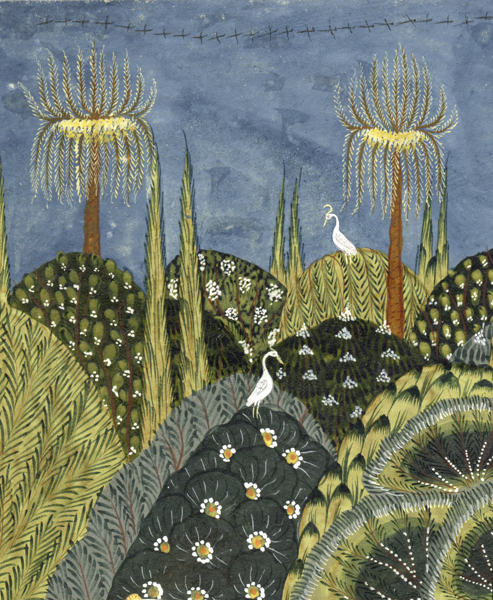
NEWARK, N.J. – In the arts of Asia, both mythical and actual birds feature prominently and represent a range of meanings. A new Newark Museum exhibition titled “Birding in Asian Art” will feature more than 100 paintings and sculptures from China, India, Indonesia, Japan, Korea, Myanmar, Nepal, Thailand and Tibet. It opens March 13, 2019, and runs through February 23, 2020.
“Learning to look closely is essential not only to the appreciation of art but also the sport and science of birding—sighting live birds in the wild. In addition to divulging the rich cultural significances of our feathered friends, the exhibition unlocks identification of various species and their affiliated habitats,” said Katherine Anne Paul, PhD, the Museum’s Curator of Asian Art.
Soaring to gravity-defying heights over land and sea, birds have been viewed as potential communicators with the divine—both benevolent and malevolent. Humans have studied birds’ plumage, longevity, intelligence, vocal communications and eyesight as well as their ability to float and fly.
Royal families throughout Asia employ mythical birds as emblems. The phoenix signifies the empresses of China, Japan, and Korea. Its cousin, the legendary roc, is revered in West Asia — celebrated in Arabic and Persian literature and arts. A mythical Hamsa goose is the vehicle of the Hindu creator god Brahma. The garuda (a bird-man) is revered in Buddhist, Hindu and Jain religions and has been used as a symbol of political states and the royal families of Cambodia, India, Indonesia, Myanmar (Burma) and Thailand and is the vehicle for the Hindu god Vishnu.
Actual birds are imbued with symbolic significance: cranes represent longevity throughout East Asia. Peacock calls welcome life-giving monsoon rains throughout south and southeast Asia where they signal love, royalty and the Hindu god Krishna. Parrots are affiliated with love in south and southeast Asia, but in China their green color is likened to financial riches. Falcons are emblems of strength. Eagles are cast as heroes. In East Asia magpies are likened to civil officials willing to speak truth to power. Owls imply special insight. In Japan the raven represents martial abilities but in Tibet is the messenger of fierce protective deities. Vultures and cemetery birds in Tibet are reminders of life’s impermanence. Roosters are intertwined with the rising sun, while doves and ducks symbolize marital fidelity.
New Jersey is an international must-visit destination among birders as it is situated along the coastal Atlantic flyway that is used by hundreds of different bird species to migrate twice a year between North and South America. The state’s beaches, estuaries, wetlands, mountains, and valleys house, shelter, and feed countless sedentary and migratory species. Birding in Asian Art encourages viewers to participate in an indoor quest for birds. Visitors are invited to seek birds out throughout the galleries — in the Arts of Asia galleries as well as in the African, American, Classical and Decorative arts galleries.
For additional information, visit www.newarkmuseum.org.
###

